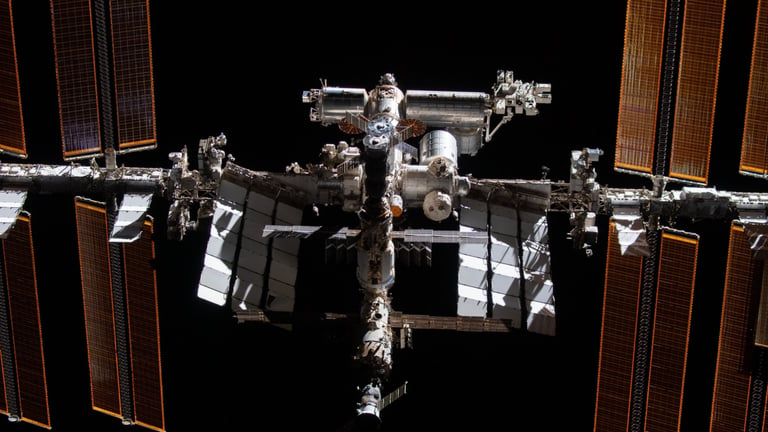ISS Safely Dodges Space Debris with Precision Maneuver, Avoids Disruption and Ensures Safety
November 20, 2024
The International Space Station (ISS) recently executed a Pre-determined Debris Avoidance Maneuver (PDAM) to steer clear of space debris from a defunct meteorological satellite that disintegrated in 2015.
The maneuver, which involved thrusters firing for 5 minutes and 31 seconds, took place at 2:09 p.m. CST on November 19, 2024, and successfully created additional distance from the debris.
The ISS orbits the Earth at speeds exceeding 17,500 mph, navigating through a dense field of space debris, which includes approximately 19,000 cataloged pieces.
While space debris poses minimal risks to individuals on Earth, it presents a serious threat to spacecraft and astronauts operating in space.
Global efforts are underway to manage and mitigate space debris, including the European Space Agency's Zero Debris Charter, which aims to limit debris by 2030.
Despite the successful maneuver, NASA and Roscosmos continue to address disagreements regarding an air leak in the Russian segment of the ISS, raising concerns about its implications.
NASA and its partners, including Roscosmos, were alerted to the potential collision risk on November 17, 2024, and monitored the debris before deciding to act.
Importantly, this maneuver did not disrupt the ISS's normal operations or affect the scheduled launch of the Progress 90 cargo craft from Kazakhstan, set for November 21, 2024.
Even small fragments of space debris can inflict significant damage on the ISS and other spacecraft due to their high velocity.
To address the escalating issue of space debris, initiatives are being developed to enhance tracking capabilities and create systems for debris removal in low-Earth orbit.
The dangers of space debris were highlighted in 2009 when a collision between two satellites generated even more debris, underscoring the ongoing risks.
In a related development, SpaceX is advancing its Starship program to support missions to the Moon and Mars, while also expanding its Starlink broadband constellation, which currently includes over 6,600 active satellites.
Summary based on 7 sources
Get a daily email with more Space News stories
Sources

NPR • Nov 20, 2024
The International Space Station adjusts its orbit to avoid space debris
USA TODAY • Nov 21, 2024
International Space Station forced to maneuver out of way of approaching space debris
Digital Trends • Nov 20, 2024
The space station just had to pull an avoidance maneuver | Digital Trends
Space • Nov 20, 2024
ISS fires thrusters to dodge hunk of space junk